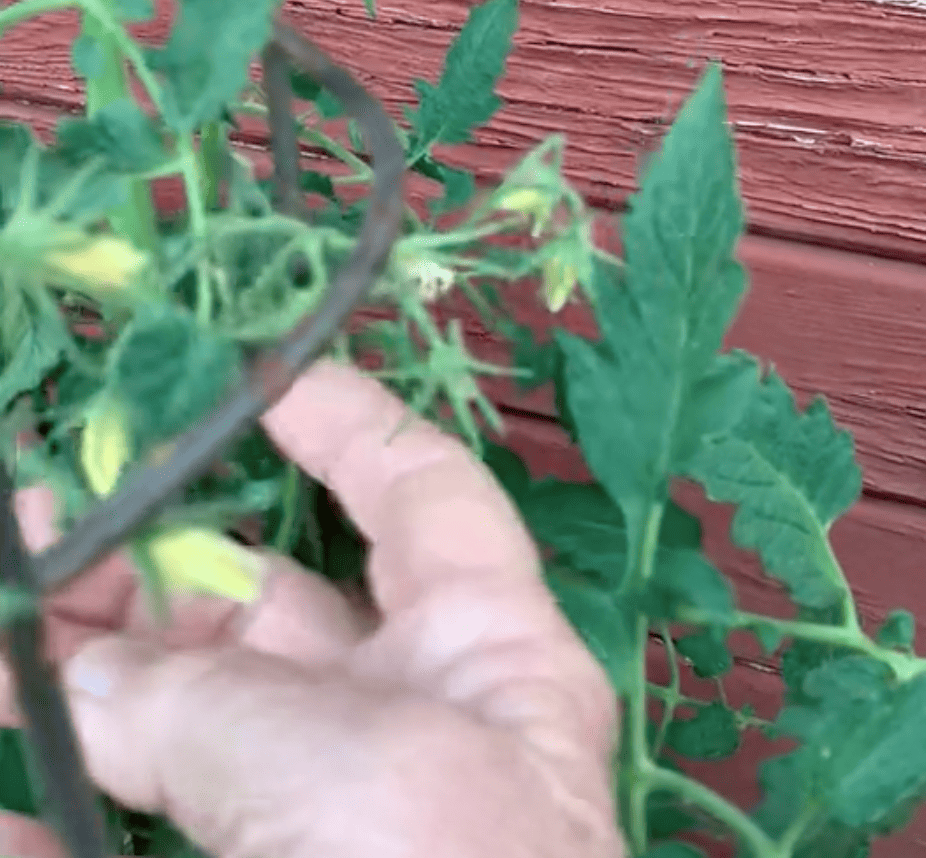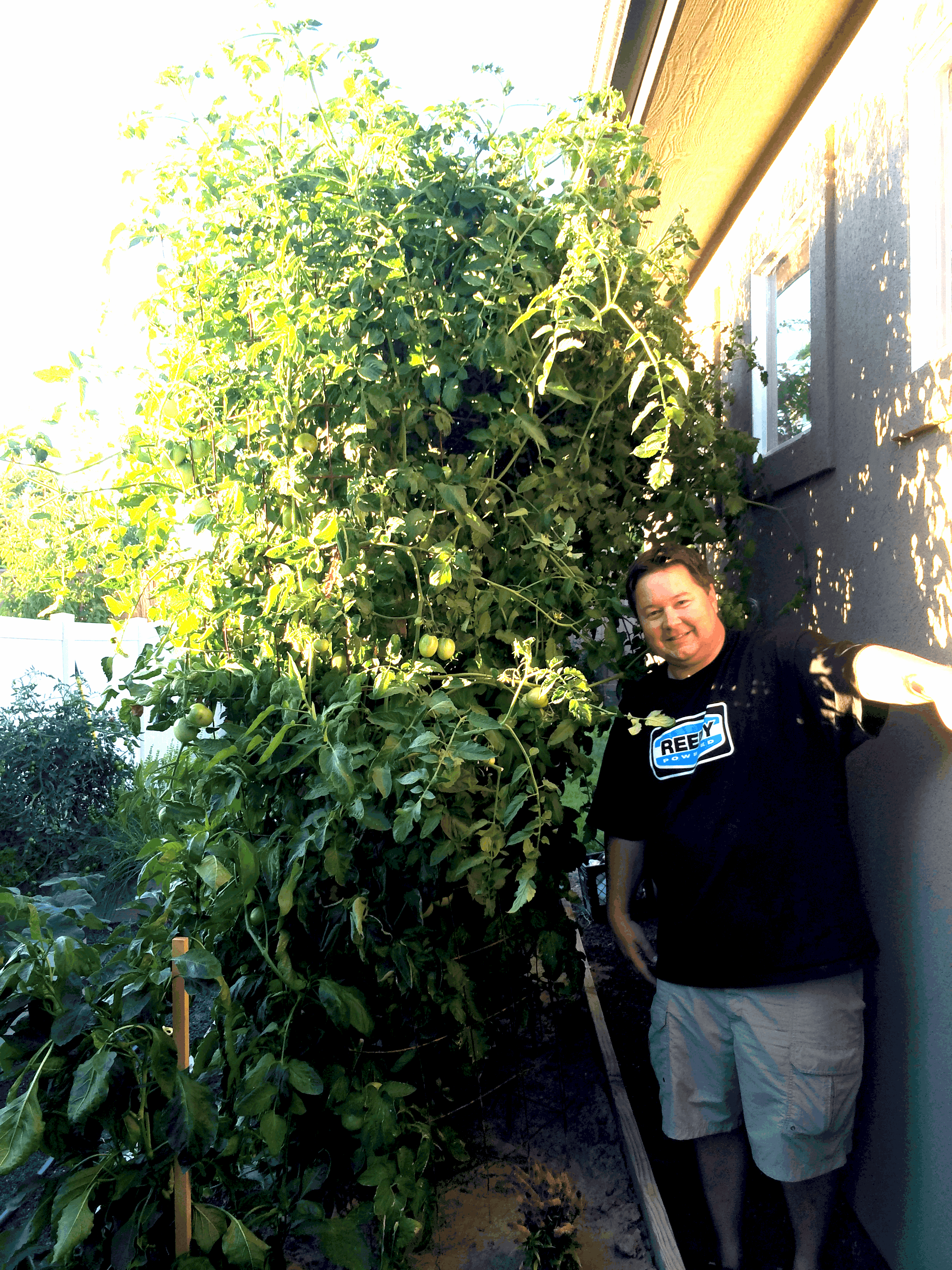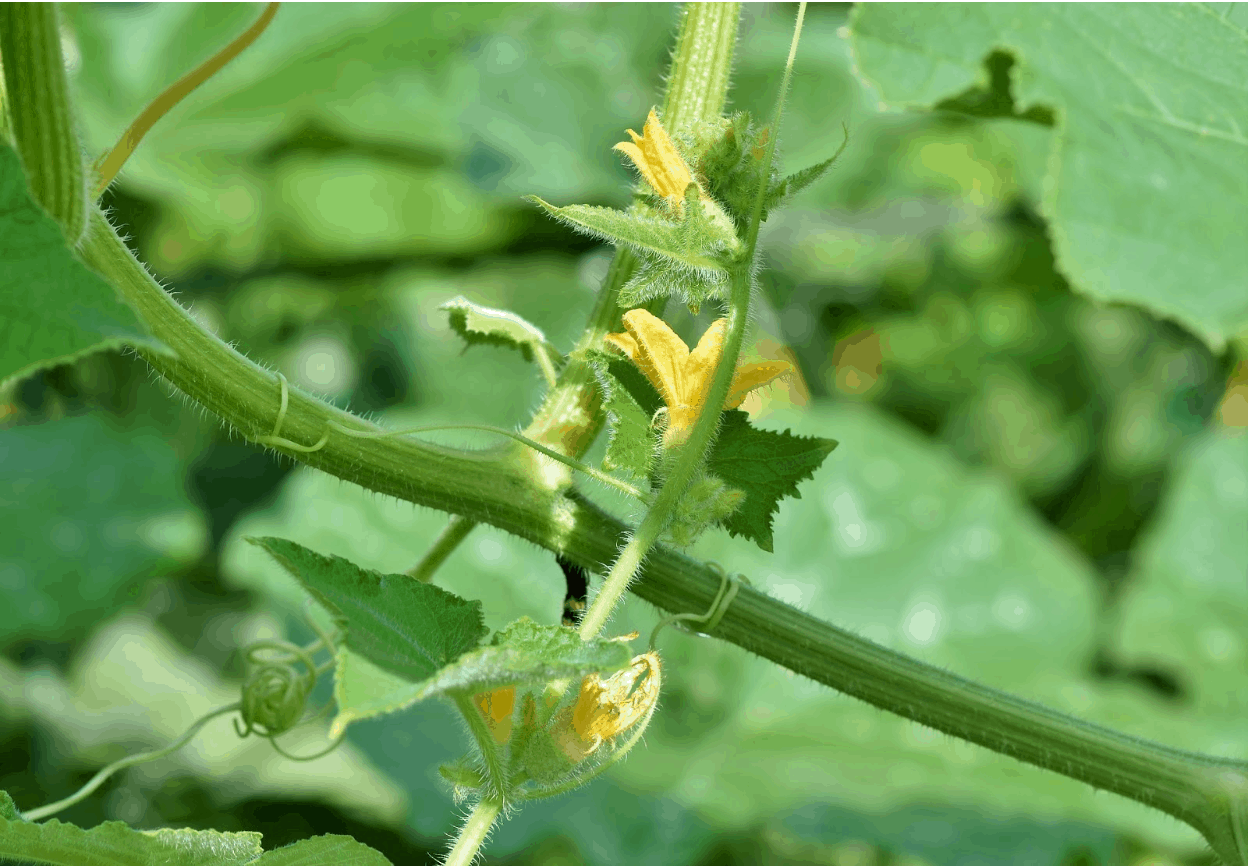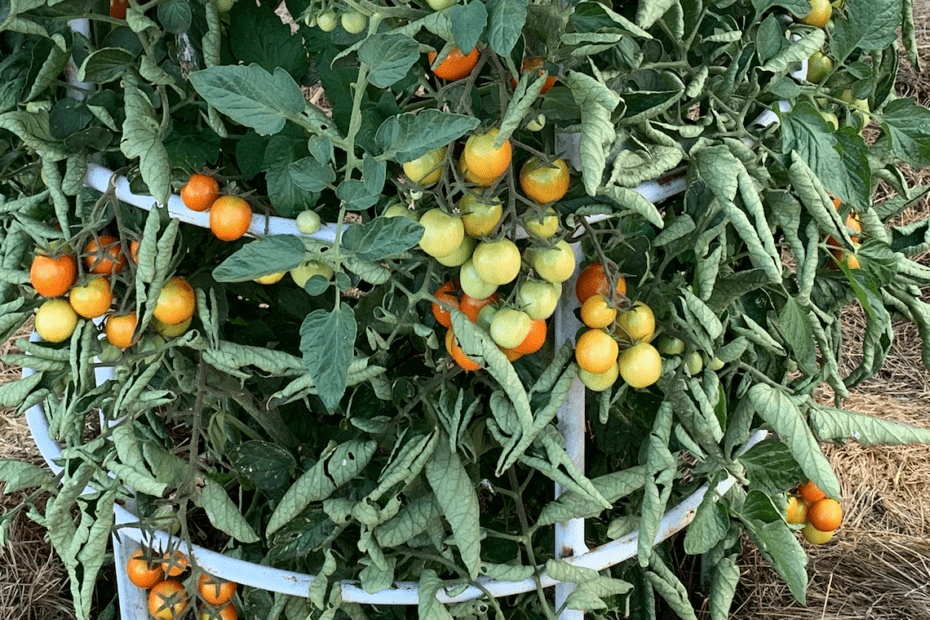How Long Does it Take for Tomatoes to Grow?
Tomatoes are the most commonly produced crop in gardens, which is hardly surprising given how tasty, diverse, and easy they are to cultivate. As your tomato plants begin to develop, you’re likely becoming increasingly excited for all the delicious foods you’ll be able to cook with fresh, homegrown tomatoes. So how long does it take for tomatoes to grow?
Gardeners around the country anticipate the delight of plucking their first ripe tomatoes as the growing season begins. However, chilly temperatures and unpredictable spring weather might cause heat-loving tomato plants to be delayed in planting and develop slowly. Today, we’ll answer your burning gardener’s question — “how long do tomatoes take to grow?” — and give you a few tips to help you get a head start on the growing season and harvest your bounty sooner.
Types of Tomatoes
The question of how fast do tomato plants grow will depend on the type. Tomatoes come in various flavors, colors, and sizes, ranging from small grape tomatoes to hefty beefsteaks. The option you choose will dictate the average tomato growth time.
Determinate
Determinate tomatoes, sometimes known as “bush” types, reach a height of 2 to 3 feet. These types produce many ripe tomatoes at once, have little leaf growth following the fruit set, and mature in a short length of time. They are often more pronounced earlier in the growing season than the vining type. Staking or caging typically isn’t necessary for determinate tomatoes as containers are ideal for these plants. Most paste tomatoes are determinate (which works well for making sauce and canning).
Indeterminate
Indeterminate tomatoes, often known as “vining” varieties, yield the most prominent sorts of mid-to-late-season tomatoes. Because indeterminates (such as beefsteak and cherry tomatoes) have higher leaf growth, their harvest is distributed equally throughout the season. Note that staking is required for indeterminate tomatoes and is perfect for larger gardens.
How Long Does It Take For Tomatoes to Grow?
As far as the “how long for tomatoes to grow” estimate goes, several factors need to be considered. Tomato plants require ideal growing conditions to produce fruit promptly. Bright sunlight, plenty of water, and frequent fertilization are all part of the circumstances required for flourishing fruit. This is why, when asking how fast do tomatoes grow, you’ll need to consider some specifics. The amount of time it takes for your tomato plant to produce depends on the type of tomato plant you’re cultivating.
Tomatoes are generally warm-season plants that do not bear fruit if nighttime temperatures fall below 55 degrees Fahrenheit. Tomatoes planted as nursery transplants in the ground in early to mid-spring will typically concentrate on leaf production and growth until conditions are suitable for fruit production. From the moment the plants are planted in the ground until the fruits are ready to harvest, many tomato varieties require 70 to 80 days. Tomato growth time can take between 20 to 30 days to fully mature from the moment they initially appear. In other words, once you’ve planted your tomato plants, they should start producing fruits after an average of 40 to 50 days.
Knowing your climate can help you pick the best tomato varieties for your area and plan out when you’ll be able to harvest them.
- Early Season Tomatoes – From transplanting to harvest, the fastest-growing tomatoes are early-season and will take 65 days or less. Gardeners in colder climates prefer early-season tomatoes since their growing seasons are shorter.
- Main Season Tomatoes – Main season tomatoes require 70 to 79 days of mild weather before they’ll yield their first crop.
- Late Season Tomatoes – The tomatoes that take the longest to grow are those that are in the late season. To yield a productive harvest, they’ll need more than 80 days of warm weather.
What Is The Best Fertilizer for a Quicker Tomato Harvest Time?
Nutrients are the key for how to make tomato plants grow faster. Gardeners must ensure that their garden beds have adequately prepared soil and scheduled fertilizer treatments throughout the season, as these plants demand a consistent source of nourishment. If you want fast-growing tomatoes, you’ll need plenty of micronutrients like magnesium. Plants with a magnesium deficit have limited development because this mineral aids in the appropriate absorption of nitrogen and phosphorus.
It’s easy to overlook the minor details, but feeding your plants with all of the nutrients they require is critical for healthy, fast-growing plants. The ideal fertilizer for tomatoes is determined by the nutrients in your soil and the stage of their growth cycle. Tomato plants need significantly more NPK — nitrogen, phosphorus, and potassium — but the amounts of each nutrient they require change as they mature.
If you want the best nutrients for your harvest, Dr. JimZ has you covered. We’ve learned how to grow sumptuous tomatoes with 50 years of experience. Tomato Secret® is a premium tomato plant fertilizer featuring a mix of biological components that will help you produce delicious, high-quality tomatoes that burst with flavor. Tomato Secret® is a carbon-based product that feeds soil bacteria and provides direct nutrients to the plant.
After all, gardeners grow their own tomatoes because they want them to taste better and be fresher than those purchased at the supermarket.
Don’t worry if your plants are already in the ground. Water each plant after sprinkling 1 cup around it. This will provide your tomatoes with the extra boost they require for outstanding growth and fruit quality!
How To Make Tomato Plants Grow Faster
In addition to using the right fertilizer, these tomato growth tips are essential if you want high-yielding tomato plants. Success begins from the bottom and works its way to the top.
Plant a Fast Grower
Check your type of tomato for the number of days to maturity when choosing transplants or seeds to start indoors. Plant a fast-growing tomato, and you’ll be eating your first ripe tomato in less than two months. Compared to types that mature in 80 or 90 days, quick growers will have a beautiful tomato on your plate a month sooner.
Harden Off Your Seedlings
Whether you started your tomato plants from seed or bought them as a young plant, you’ll need to harden them off to get them used to their environment. Place the seedlings in a sheltered area outside (partly shaded, out of the wind) for a few hours a day, approximately a week before you plant them. Expose them to more sunlight over the next 7-10 day period.
Soil Preparation
Tomatoes prefer to grow in rich, well-draining, and deep soil. The first step to great tomato production is properly preparing the soil before planting. This soil preparation enables the plant’s roots to develop deeper and have access to all of the nutrients it requires to thrive. Here are a few tips to get you started:
- Before you begin preparing the soil, get a soil test done. Soil testing reveals the precise nutritional makeup of your garden beds, as well as which nutrients are deficient. It also gives you your soil’s pH range, which is important for tomato plants.
- Make sure your garden bed is deep enough. The soil should be at least 12 to 24 inches deep to allow the roots to spread out.
- Compost should be added to your garden beds in a layer that is at least six inches deep. If you use high-quality compost, your plants will get the majority of the nutrients they require to flourish.
- Apply one cup of Tomato Secret fertilizer for tomatoes inside the frame every two weeks.
- Tie up your plant using a soft material. Make a tie out of an old nylon stocking, soft yarn, or commercial plant ties. The goal is to connect lightly so that stem development is not hampered.
- Using fermented Chicken Soup for the Soil diluted 1 to 10 with water, spray your plants once a week.
- As the season advances, you’ll need a robust, well-placed ladder to tie up your plant.
- Remember, you’re feeding the soil microbes, which in turn are nourishing the plant. Avoid using chemical fertilizers or pesticides that might damage the microbiota.
Incorporate Calcium
Do you know what blossom end rot is? It occurs when black or brown patches appear on a tomato’s blooming end. The most prevalent cause of blossom end rot is a calcium deficit combined with inconsistent watering. Although it’s essential to test your soil for calcium levels before planting, many gardeners still use eggshells. Calcium carbonate makes up around 96 percent of eggshells. Eggshells should be saved and ground into a powder. Then, when you’re ready to plant your tomato seedlings, pour some of this into each hole.
Plant Them Deep
Tomato plants need to be planted deep in the ground to thrive. Before you plant, examine the stems closely for microscopic, fibrous hairs that run the length of the stem. These aren’t hairs; they’re the plant’s prospective roots. They form roots if any of them are buried in the soil. Tomatoes that are planted deeply develop strong, hearty roots. This implies that the plants are able to absorb more nutrients from the soil, allowing them to produce more fruits.
Pinch off the lower leaves while planting tomato seedlings, leaving only a few leaves at the top. Then, plant the tomato seedling deep enough so that the stem is just below the lowest set of leaves.
Warm the Soil
Tomatoes thrive in warm soil, while cold soil stunts their development. Pull aside the mulch in your garden beds in the early spring to expose the soil to the sun’s warmth. A translucent plastic sheet draped over the bed can also help retain the heat. Containers and raised beds warm up faster than garden soil, making them perfect for heat-loving plants such as tomatoes.
Allow the light to continue to warm the soil by leaving the soil bare around fresh transplants for the first month or so. You may spread a 2″ layer of straw to help maintain soil moisture once summer temperatures arrive in earnest.
Deeply and Consistently Water
Tomato plants don’t like when their irrigation isn’t steady. You must stick to a regular schedule and water deeply when it comes to watering. Deep watering encourages your plants to create a robust root system that anchors them to the earth. It also permits the plants to reach deeper into the soil for nutrients. Even if the top layer of soil dries up, the roots will still have water.
Remove Excess Moisture on Leaves
Tomato plants are unhappy when their leaves get wet. While a little rain won’t hurt them, tomato leaves that are constantly damp are more susceptible to blight and other illnesses or infections. So while you can’t stop the rain from falling, you can be conscious of how you water your plants throughout the season.
Water your plants from the bottom up; above irrigation is hazardous for your crops. Consider erecting a cover or growing tomatoes in a hoop house to keep rainfall from dropping on your leaves.
Protect Young Plants from the Chill
Plant development is significantly slowed by temperatures in the 50s and below, and strong wind dries out plants and can break stems. To take advantage of the warmer microclimate, plant your tomatoes on the south side of the house.
Control Pests and Diseases
Tomatoes are prone to bug infestations. Follow these simple guidelines to minimize insect pest overpopulation:
- Check the tomato plants daily, looking under the leaves, inspecting the fruit, and inspecting the soil.
- Spray plants with a stream from the hose to avoid pests like aphids.
- Handpick larger insects like tomato hornworms with gloves on and place them into a pail of soapy water.
- For more minor pests like aphids and spider mites, apply insecticidal soap directly to the insect on the plant.
- Use horticultural oils or sprays that have been diluted with water.
Note: If you use pesticides as a last option, bear in mind that you may be harming beneficial insects as well.
Pruning
Pruning isn’t just for trees and plants, as many people believe. Heavy pruning benefits tomato plants, resulting in more prominent crops. Pinching off the lowest branches is the first step. Pinching off tomato flowers is also necessary since your plant has to focus its energy on root growth.
Check for Fruiting and Flowering
If you find tomato plants growing very slowly, it’s possible that the plants aren’t receiving enough sun or water, as too little of either can stop flowering. High daytime temperatures (above 90°F) may be blamed for flower drop-off. Using row covers or shade cloth, provide shade during the warmest portion of the day. Insufficient light, too little water or inconsistent watering, too cold or high temperatures, or a lack of pollinators might all be factored in plants producing a lot of blooms but no fruit.
Low humidity might hamper pollination — the optimal range is 40 to 70 percent. If the humidity level is low, spray the plant to aid pollen adhesion.
Grow a Prize-Winner with Dr. JimZ
When it comes to growing healthy, juicy tomatoes, one of the most important things you’ll need is the right tomato fertilizer. The majority of fertilizer businesses employ chemical-based chemicals (nitrogen), which tend to “burn out” the soil, depleting it of vital nutrients required to develop healthy tomatoes. Our solutions are formulated with biologically correct substances to enrich your soil with the required carbon and trace minerals for maximum development, overall plant performance, color, and flavor.
If you would like to learn more about how our all-natural products can help your garden, contact Dr. JimZ today.



